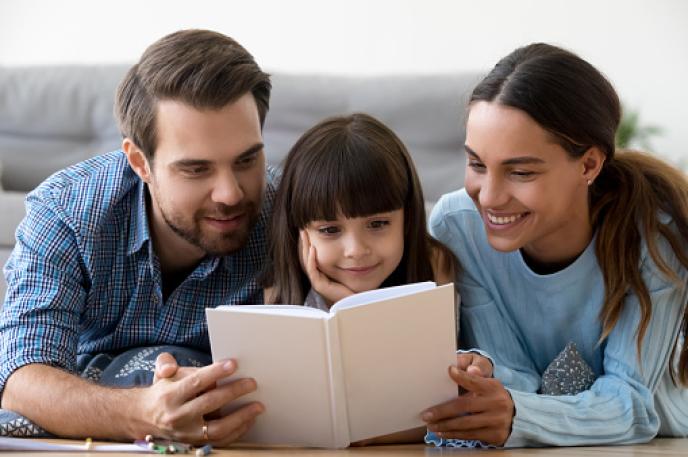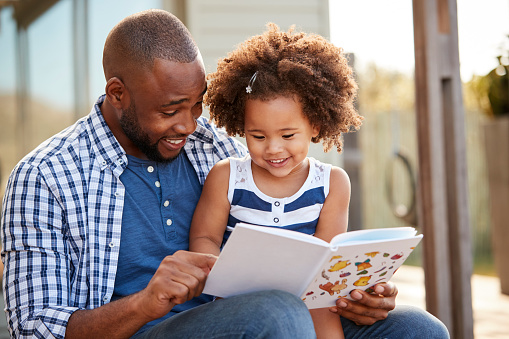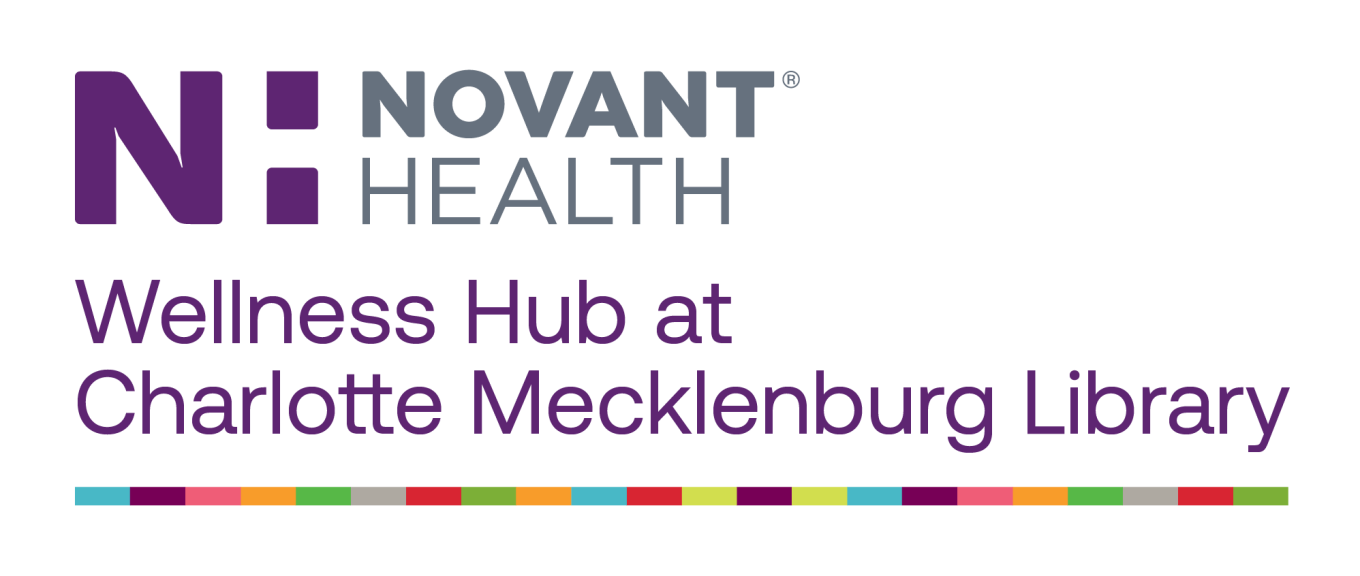This blog written by Hannah P. Simmons, library associate for Charlotte Mecklenburg Library.
If you find yourself cruising down Holly Crest Lane, you just might discover the North County Regional Library, one of the many facilities proud to be part of the Charlotte Mecklenburg Library system. The North County Regional Library has been serving the populations of Huntersville, Davidson, and Cornelius since 1997, but it got a major makeover in 2019. Situated close to parks, dining, and entertainment, the North County Regional Library is a hub in the community to not only provide traditional library services, but also host community events. This tri-level building offers a little something for every age. On the main floor, you can pick up your Holds, as well as browse the DVDs, Magazines, and New Fiction. The main floor is also where you can return items in the “Book Drop”, and access both the patio and indoor cafe seating areas.
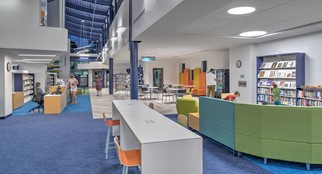 You can take the stairs or elevator up to the 3rd Floor to browse the Children and Teens collection. The North County multimedia collections gives youth access to Chapter Books, Picture Books, Easy Readers, Wonderbooks, Books on Disc, Playaways, and so much more! While you’re upstairs, you might take part in a Scavenger Hunt, an indoor Story Walk, check out the “I-Spy” Tank, or join in a storytime in the Program Room. Also upstairs, you will find the Makerspace! Our Makerspace houses some of the latest creative technology. Stop by during Open Hours to check out the 3D Printer, Carvey machine, and a Recording Studio, to name a few! You can take part in some self-guided STEAM activities with the In-House kits that let you play around with robotics and circuits.
You can take the stairs or elevator up to the 3rd Floor to browse the Children and Teens collection. The North County multimedia collections gives youth access to Chapter Books, Picture Books, Easy Readers, Wonderbooks, Books on Disc, Playaways, and so much more! While you’re upstairs, you might take part in a Scavenger Hunt, an indoor Story Walk, check out the “I-Spy” Tank, or join in a storytime in the Program Room. Also upstairs, you will find the Makerspace! Our Makerspace houses some of the latest creative technology. Stop by during Open Hours to check out the 3D Printer, Carvey machine, and a Recording Studio, to name a few! You can take part in some self-guided STEAM activities with the In-House kits that let you play around with robotics and circuits.
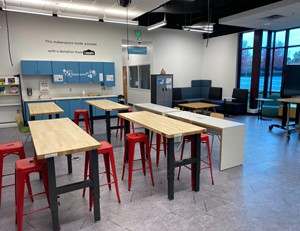 Be sure to take your Teens up to the Loft where they can browse on the computer and check out the Fiction, Nonfiction, and Graphic Novels collections. They can also take a photo for the Selfie Board, and jump in on other interactive displays. Need some study supplies? The Loft has you covered! We’ve also got “Dry Erase” tables for collaborative study sessions.
Be sure to take your Teens up to the Loft where they can browse on the computer and check out the Fiction, Nonfiction, and Graphic Novels collections. They can also take a photo for the Selfie Board, and jump in on other interactive displays. Need some study supplies? The Loft has you covered! We’ve also got “Dry Erase” tables for collaborative study sessions.
A trip down to the 1st Floor will bring you to our Adult Fiction and Nonfiction shelves, Audio Books, Graphic Novels, as well as Audio Books. You can also access our Community Rooms for Adult Programming, and several cozy spaces to set up with a book or your laptop. We also have Computers and Study Rooms. Computers can be accessed with a Library Card or Guest Pass, and Study Rooms can be reserved for some private study or work time. Just head to the Circulation Desk, or call ahead that day to reserve your space!
A short distance from the library, you can access shopping, dining, parks, and Downtown Huntersville! Birkdale Village is a short drive up Sam Furr Road, and provides access to many excellent local businesses. At Birkdale, you can see a movie, shop for some clothing or home decor, and grab a bite to eat! In the mood for some amazing pub food? Check out Bad Daddy’s Burger Bar! They not only have a vast selection of signature burgers, but if you’re feeling creative, you can build your own. Feeling a little more adventurous? Head over to Kung Foo Noodle for some of the best Asian-fusion the Charlotte area has to offer. Sushi, pho, banh mi, bubble teas, and more, Kung Foo Noodle delivers amazing flavor along with a bold and colorful interior that makes for an epic dining experience. The NorthCross Shopping Center sits across Sam Furr Road from the Library, which offers several popular lunch and coffee spots, trendy stores to browse, and stores where you can purchase essentials.
Whether you want indoor or outdoor fun, we have the place for you. The North Meck Regional Recreation Center is your go-to place for amazing indoor activities. Swimming, basketball, and volleyball are just a few of the fun things to do inside. Also, North Mecklenburg Park is also only 2 miles away from the library. This park has multiple playgrounds, walking and biking trails, as well as outdoor tennis courts, basketball courts, and soccer fields!

Last but not least, you can hop over to Downtown Huntersville for even more family fun! So are you ready to explore and have some fun in Huntersville? We will be waiting to see you at the North County Regional Library.
New to Charlotte? Explore other neighborhoods through the Charlotte Mecklenburg Library blog and WelcomeCLT, a digital space created for newcomers to Charlotte.
RESOURCES:
- North County Regional Library - 16500 Holly Crest Lane, Huntersville NC 28078 | 704-416-6000
- Birkdale Village - Birkdale Commons Parkway, Huntersville NC 28078
- Bad Daddy’s - 8625 Lindholm Dr A, Huntersville, NC 28078 | 704-237-4055
- Downtown Huntersville - 105 S Old Statesville Road, Huntersville NC 28078
- Kung Foo Noodle - 8625C Lindholm Dr, Huntersville, NC 28078 | 704-997-8132
- Northcross Shopping Center - 9751 Sam Furr Road, Huntersville, NC 28078
- Northern Regional Recreation Center - 18121 Old Statesville Rd, Cornelius NC 28031 | 980-314-6772
- North Mecklenburg Park - 16131 Old Statesville Road, Huntersville NC 28078
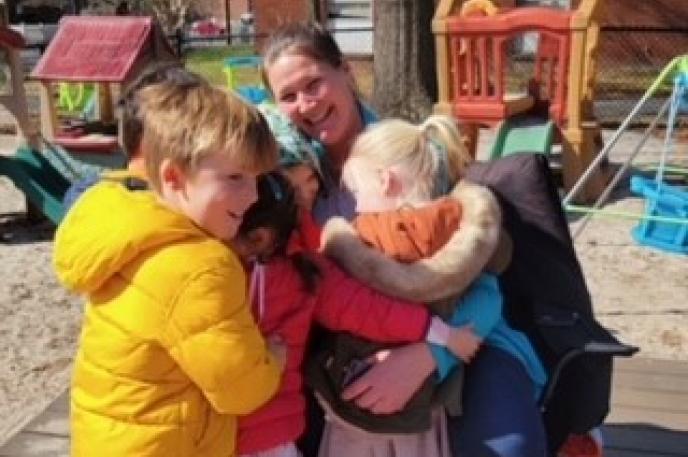

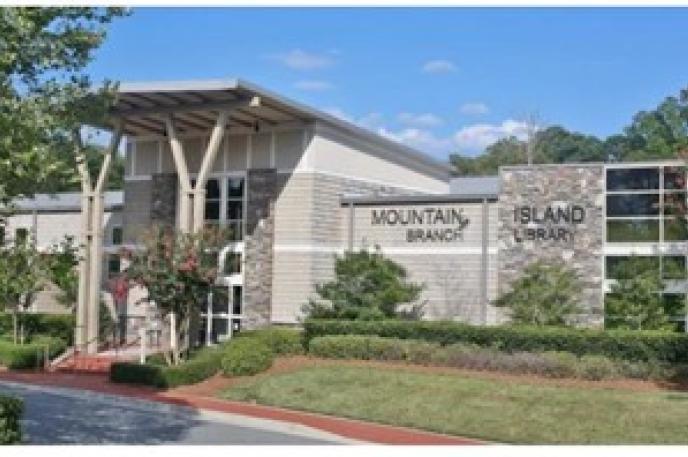
 The Mountain Island Area is surrounded by amazing outdoor and nature centered attractions such as
The Mountain Island Area is surrounded by amazing outdoor and nature centered attractions such as 
 You can take the stairs or elevator up to the 3rd Floor to browse the Children and Teens collection. The North County multimedia collections gives youth access to Chapter Books, Picture Books, Easy Readers, Wonderbooks, Books on Disc, Playaways, and so much more! While you’re upstairs, you might take part in a Scavenger Hunt, an indoor Story Walk, check out the “I-Spy” Tank, or join in a storytime in the Program Room. Also upstairs, you will find the Makerspace! Our Makerspace houses some of the latest creative technology. Stop by during Open Hours to check out the 3D Printer, Carvey machine, and a Recording Studio, to name a few! You can take part in some self-guided STEAM activities with the In-House kits that let you play around with robotics and circuits.
You can take the stairs or elevator up to the 3rd Floor to browse the Children and Teens collection. The North County multimedia collections gives youth access to Chapter Books, Picture Books, Easy Readers, Wonderbooks, Books on Disc, Playaways, and so much more! While you’re upstairs, you might take part in a Scavenger Hunt, an indoor Story Walk, check out the “I-Spy” Tank, or join in a storytime in the Program Room. Also upstairs, you will find the Makerspace! Our Makerspace houses some of the latest creative technology. Stop by during Open Hours to check out the 3D Printer, Carvey machine, and a Recording Studio, to name a few! You can take part in some self-guided STEAM activities with the In-House kits that let you play around with robotics and circuits. Be sure to take your Teens up to the Loft where they can browse on the computer and check out the Fiction, Nonfiction, and Graphic Novels collections. They can also take a photo for the Selfie Board, and jump in on other interactive displays. Need some study supplies? The Loft has you covered! We’ve also got “Dry Erase” tables for collaborative study sessions.
Be sure to take your Teens up to the Loft where they can browse on the computer and check out the Fiction, Nonfiction, and Graphic Novels collections. They can also take a photo for the Selfie Board, and jump in on other interactive displays. Need some study supplies? The Loft has you covered! We’ve also got “Dry Erase” tables for collaborative study sessions.

